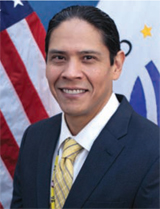
On February 14, I was invited to speak at a symposium, hosted by the Brookings Institute, to discuss what’s next for the tribal gaming industry. Brookings economist Randall Akee brought together a variety of experts and speakers from the United States federal government, tribal governments, academia, and other governmental and non-governmental institutions, all of whom reflected on the first 30 years of gaming under the Indian Gaming Regulatory Act (IGRA) and opined on expectations for the next 30 years to come.
The main takeaway: data matters.
It is no secret that federal law and policy have historically oscillated between two contrasting approaches to Indian affairs. At times, the federal government has enacted laws that detracted from or diminished tribal sovereignty and self-determination.
For instance, with the passage of the Allotment Acts at the turn of the 19th century and into the first decade of the 20th, we witnessed a significant diminishment of the inherent right of tribal nations to make their own laws and be governed by them.
The passage of the Indian Reorganization Act (IRA) in 1934 marked a distinct shift away from assimilationist policies of the Allotment Acts towards restoring tribal sovereignty and self-determination. But this shift did not take place in a vacuum. While many events and facts shaped the motivations and intentions of lawmakers at that time, there can be no question that the Merriam Report served as a significant catalyst for the IRA of 1934.
The 847-page Merriam Report, commissioned by Brookings (then known as the Institute for Government Research), collected data from tribal communities across the United States and studied the economic and cultural impacts that the Allotment Acts had on American Indians. The data showed clearly that the assimilationist policies and laws in place at the time had not led to economic prosperity in Indian Country, but instead, had increased poverty and removed valuable resources from tribal nations and their citizens.
This Brookings-commissioned work was invaluable, and the report quickly became the basis for drafting and passing IRA, an act that sought to restore the tribal sovereignty and self-determination that the Allotment Acts had taken away.
As we reflect on the first 30 years of IGRA today, we can learn a lot from the numbers. From our perch as the federal regulators of Indian gaming, we at the NIGC have been direct witnesses to what has effectively been a three decades-long referendum on the viability of tribal stewardship over the industry. From that perch, we have observed firsthand the conclusive benefits of supporting tribal sovereignty in both the operation and regulation of the industry.
In the last 30 years, Indian gaming has brought Indian Country unprecedented economic development and growth. Today, Indian gaming constitutes a $34.2 billion dollar industry that funds critical tribal governmental programs. Tribal nations are the 13th largest private employer in the U.S.
Additionally, Professor Akee shared that the residual economic effects of the Indian gaming industry cannot be understated. In his research, he has found that over the past 30 years, overall education attainment has increased with graduation rates up by 40 percent, and there is an increase in the likelihood of youth continuing on to vote and become engaged in civic activities.
To be sure, IGRA was the result of a compromise, as it created a role for states in Indian gaming that states previously had never held. At the same time, because Congress crafted IGRA from three foundational principles—tribal economic development, tribal self-sufficiency, and strong tribal governance—the act created a regulatory framework that places tribal self-determination front and center. For the last 30 years, tribal self-determination has guided the NIGC’s regulatory actions and enforcement of IGRA’s mandates and prohibitions.
The NIGC’s primary mandate, therefore, has been to regulate in a manner that strengthens tribal sovereignty and affirms tribal nations as the primary regulators of their own gaming operations.
Much of the success of IGRA’s first 30 years can and should be attributed to the fact that tribes themselves serve as the primary regulators of Indian gaming.
We have seen how the implementation of IGRA has led to one of the most successful industries in the country, if not the world. And I can confidently say that the success of this industry is due to IGRA’s placing the highest level of importance on the principles of tribal sovereignty and self-determination. NIGC has followed suit and incorporates these principles in all that we do.
On several recent occasions, I have been hearing a similar, reoccurring question: “What will the next 30 years of IGRA and Indian gaming look like?” The short answer is we have 30 years of reliable facts demonstrating the successes of Indian gaming, which will shape and push Indian gaming policy into its future.
Ultimately, what lies in store for Indian gaming has yet to be written, and it is up to the decision-makers of Indian policy and the Indian gaming industry itself to ensure Indian gaming continues to see the successes we have witnessed to date. Given our observations of the tangible benefits of adherence to self-determination principles in the creation and implementation of IGRA, advancement of these principles should define future policy discussions, including topics of the day, such as sports betting or internet gaming.
The remarks of those who spoke at Brookings this past February clearly demonstrate that IGRA is one of the most successful and relevant laws to date in Indian Country. After 30 years of IGRA, I am confident that both the NIGC and the Indian gaming community are on the right path.
At the same time, we are mindful of IGRA’s self-determination goals at every turn. As a result, we understand that our regulatory responsibilities require us to collaborate, consult and coordinate with tribal nations at all times, which strengthens tribal self-governance and, as a result, strengthens the industry itself. We are excited to enter into the next 30 years of Indian gaming.






